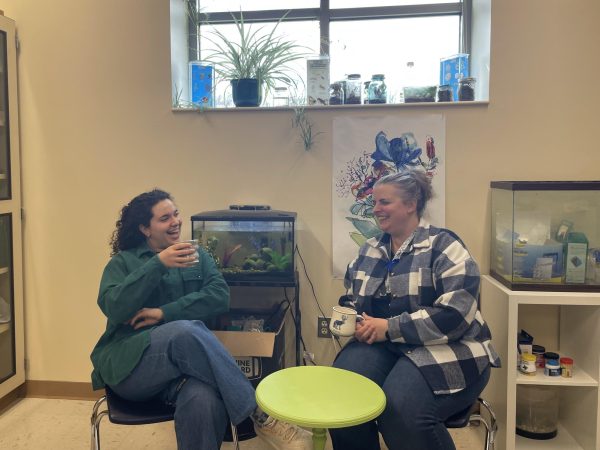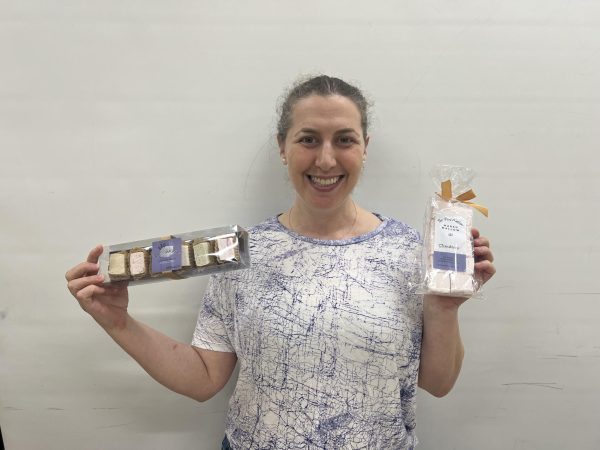Influencers: Slap or cap?
September 9, 2022
Throughout each decade, a new form of media has been viewed as a corrupting influence on teens. In the ‘50s, adults were concerned about the effect that Elvis Presley and his “provocative’’ dance style had on teens at the time. In the ‘80s, adults lamented the time teens spent watching music videos on MTV. Now, adults are concerned about what social media is doing to teens’ minds.
One of the main parts of social media is the influencers on TikTok, Instagram and YouTube who have thousands of followers and share videos and posts daily. Should adults be wary of influencers’ impact on teens? Or, are influencers really doing better things for society than it may seem?
“[Influencers] can help people create new mindsets to have a better perspective on themselves in life,” sophomore Neely Shemony said. “But in some senses, it can also be very dangerous for some people because they can be influenced to do something that they don’t actually want to do.”
A notorious example of this was the “Tide Pod Challenge” in 2018, a challenge spread primarily through Youtube. The goal of the challenge was to chew on a Tide Pod without swallowing the soap. According to Lindsey Bever for the Washington Post, around 220 teenagers were reported to the U.S. Poison Control Center for being exposed to poisonous substances in the Tide Pods.
Two other examples of similar challenges were the “cinnamon challenge” and the “salt and ice challenge.” The concept of the cinnamon challenge was to ingest a spoonful of cinnamon in under a minute without reacting. Similarly, the salt challenge consisted of teens placing salt somewhere on their body, typically their arms, applying ice to the same area and holding it there until they experienced a burning sensation similar to frostbite.
This challenge, which was promoted by influencers, would result in burns left on teens’ skin and promotion of dangerous, impulsive behaviors.
Another harm of influencers is that they can make their audience feel insecure about themselves. Since several teens spend their free time scrolling on social media, and many of them may find themselves comparing their looks or personality to an influencer, who typically represents the ideal social media presence.
Whether the influencer is aware of it or not, the content they create may be damaging their audience’s mental health. By showing only the glamorous parts of their lives, they make it seem like they have no struggles or challenges in their lives.
Nicol Maciejewska at The Teen Magazine says that you may not be able to fully trust everything influencers show you. It’s hard to differentiate between the realistic content they show and the content that only shows what they want to show the world.
Although influencers certainly have their downsides, senior Samantha Eidelman feels that they can bring healthy mindsets to our society. They note that some influencers create content about body positivity and endorse positive messages to teens.
“There’s some people that go out of their way to promote positive habits, or brands, or just general practices,” Eidelman says. “And those are the types of people that I do appreciate and that are considered influencers.”
One similar trend was the body positivity movement, which trended on social media around June 2020. Originally, the movement kicked off in 1969 when people started celebrating their bodies, no matter their shape. When TikTok grew in popularity during quarantine, the movement began to thrive once again. Influencers from all around the world have since been showcasing their different body types in an attempt to normalize variety in bodies.
For example, influencer Remi Bader takes the time to show others how the latest fashion trends look on a plus-size body. Selling inclusive sizing has been an ongoing issue for many years, and Bader has taken it upon herself to raise awareness and make a change to today’s norms. Acting as a voice for those without a platform, she has managed to grab the attention of mainstream brands and worked with them to improve their inclusivity.
Many influencers have also been trying their best to provide a sense of comfort for their audience. For example, a number of influencers have been taking their time each night to read a bedtime story live on TikTok. Some even provide live music or an outlet for people to talk about their days. Others do research and provide tips to improve sleep, mental health or ways to make their followers’ days better.
Some influencers take time to prove to their followers that they’re more than just a video on a screen. They allow their followers to connect with them and they work hard to show that they truly want to help and be available to those who are in need.
According to Kevin Dean at ManoByte, there’s a “strong aspect of trust between an influencer and their audience.” It is up to the influencer to form a connection with their followers and earn their trust. For some, this could be a heavyweight to carry throughout their career. This may lead people to wonder what it would be like if there weren’t any influencers to begin with.
Eidelman believes that if influencers disappeared, there would be both positive and negative impacts.
“I think there would be a lot less self-consciousness and self insecurities,” Eidelman said. “Also I think that in some ways people would have trouble getting help with certain things or surrounding themselves with positive content.”
However, it’s not only up to the influencer to ensure a positive mindset for their followers. Teens may have to think about what the right choice is to make when spending their time on social media. This includes deciding which influencers will do more harm or good for their mental health.
“I started watching and listening to influencers that really attended to my needs,” Shemony says. “Things started changing and, you know, it was for the better.”

















